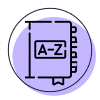
An Unsupervised Neural Network is a machine learning model used to analyze and find patterns in unlabeled data. Unlike supervised neural networks, where the model is provided with a training data set with labels, in an unsupervised neural network the model has to learn by itself from the data.
Unsupervised neural networks are used to perform clustering and dimensionality reduction tasks. In a clustering task, the objective is to group data into groups or clusters that share similar characteristics, without prior knowledge about the nature of the data. In a dimensionality reduction task, the objective is to reduce the complexity of the data by reducing its dimension.
The two most common types of unsupervised neural networks are Kohonen Neural Networks and Autoencoder Neural Networks. In a Kohonen Neural Network, also known as a Self-Organizing Map, the neurons are organized into a two-dimensional map and are adjusted to group the data into regions of the map. In an Autoencoder Neural Network, the model is trained to reconstruct the input data through a neural network composed of an encoding layer and a decoding layer.
Cheap, infinite, safe and clean energy Artificial Intelligence from Thermonuclear Fusion research to sales generation or [...]
Read More »As e-commerce continues to grow at a dizzying pace, fraudsters are also finding new and sophisticated ways to exploit the potential [...]
Read More »All businesses usually plan for annual growth, although not all of them achieve it. Increasing the sales of a company in 2022 is [...]
Read More »Today we are going to explain the differences between a traditional CRM (Customer Relationship Management) and an intelligent CRM by applying technology that [...]
Read More »